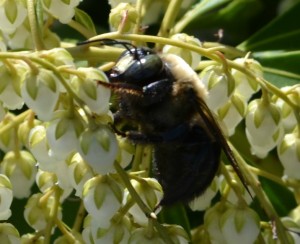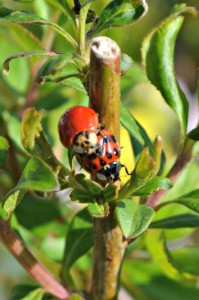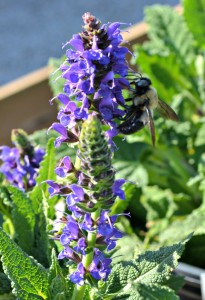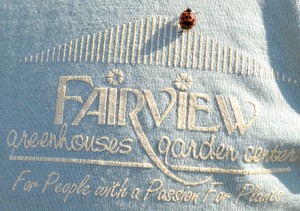The Buds and the Bees
Attracting Pollinators to Your Veggie Garden
more flowers = more pollinators = more fruits and veggies!
The cold, bone chilling winds have subsided to reveal the gentle breeze and sunshine of April. We can get out of the house and into our gardens knowing the pleasure of warm weather has dawned. Our garden beds have endured an extra cold and wet winter and are ready to be tended and planted. While spring is a natural time for us gardeners to dream about the bountiful gifts our garden will provide, we give little thought to the pollinators of our vegetables. These extraordinary little workers will be emerging and looking for food. The more pollinating insects in your garden, the more abundant your food harvest will be. With a little planning and care we will be rewarded with a more healthy and prolific harvest.
A healthy vegetable garden needs a steady supply of blooms to feed pollinating insects, so plan for early blooming flowers along with early vegetables. Including plants that attract the most pollinators is important. Bees, birds, bats and butterflies transfer pollen from one flower to another leading to fertilization and development of good fruit and seeds for future crops. The most important and essential of these pollinators is bees. Flowers that attract bees will provide the necessary food for survival when the vegetables are not blooming. Not all vegetables bloom at the same time so it is important that they have these other sources of food. By ensuring there is always a source of nectar, more pollinators will be attracted, resulting in a more prolific garden. To attract bees select showy flowers, native flowers and herbs. They need flowers that bloom early and continuously throughout the season.
Some bees nest in the soil, therefore leaving untilled places in your garden provides them with shelter. If they emerge from the ground in a cold spring and cannot find nectar before the vegetables bloom they may die without producing eggs for the next generation. Large groupings of flowers planted within the vegetable garden and around the border make it easier for the bees and they will be less likely to fly away. When they find a plant they really like they will hone in on it for hours. Many pesticides kill all insects, even the beneficial ones, so if you have to use them do so in the late evening when some insects are less active. To keep from having pest problems try to buy plant varieties that are more disease resistant, rid the vegetable and flower beds of weeds and compost to keep the soil rich and moist. A night time gathering of slugs and snails may catch them in action. Many bugs such as the Mexican bean beetle like to hide from their predators so check at least every other day for insect pests, especially under the leaves.
Creating a diverse garden with trees, shrubs, plenty of flowers and a water source will attract and retain native beneficial insects for pollination and natural pest control producing a more abundant harvest and the vegetable garden of your dreams. Include a large variety of pollinator attracting flowers such as butterfly weed, baptisia, helianthus, bee balm, sunflowers, agastache, nasturtiums, marigolds, celosia and herbs.
A perfect, pest free garden does not exist, but careful monitoring and prevention is crucial to your success. All successful gardeners begin with experimentation and trial and error to find what works for best them. Include flowers that bloom early and simultaneously for your delight as well as your pollinating friends. Go ahead, plan and dream of those delightful, simple meals you and your family will enjoy this season and remember those extraordinary little bees that helped you produce it!
Anna Y.
Assistant Greenhouse Manager









